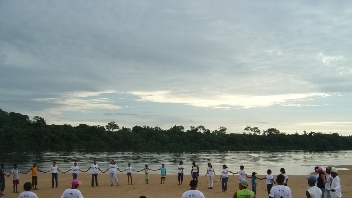Listening to the local communities was key to the success of the Amazon Protected Areas Program (ARPA) since implementation began in 2002. It wasn’t easy, given that 30% of the 25 million people who live in the Amazon are in rural, isolated areas, without Internet access.
“When you’re leaving Brasilia – in the middle of the Brazilian territory – heading to the Amazon, the shortest trip you can take is to Belem, which is two and a half hours away if you fly,” says World Bank’s Senior Environmental Specialist Adriana Moreira, Project Manager. “In addition, trips by car and by boat are always needed to reach the conservation units.”
Still, public consultations were undertaken with several communities over the last 10 years thanks to the help of local associations (formed by rubber tappers, river populations, indigenous peoples, etc.). “They form a social fabric that is extremely important in the Amazon,” she notes.
These talks helped define policies for land occupation and management, for example. Conservation parks were created throughout the Amazon, as along with areas for sustainable use. Each conservation unit has an executive council comprised of representatives from the Brazilian government, civil society associations and local administration, among other stakeholders.
The communities were trained on agricultural and extractive techniques to ensure the preservation of natural resources. Additionally, they learned how to prevent and extinguish forest fires. Such strategies improved livelihoods, and helped preserve cultures which may otherwise have been lost. “These benefits not only affect Brazilians, but also have a lasting impact across the globe,” Moreira adds.

